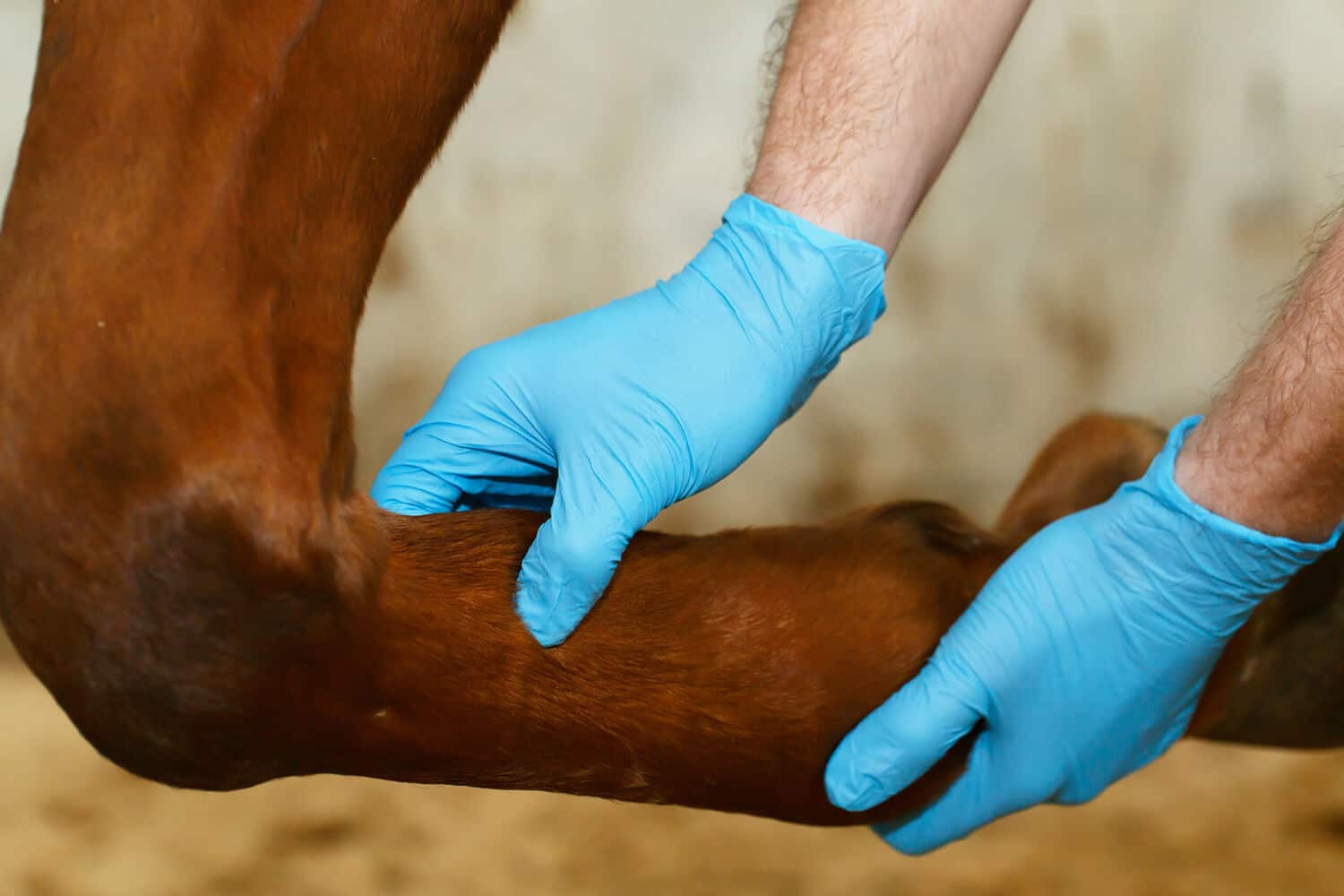Does my horse have joint pain?

Joint pain in horses can present itself in a myriad of ways. When it comes to joint pain, we as horse owners, often think of the obvious signs of stiffness and lameness. However, signs that your horse is in pain may be more subtle than you think.
We all know that horses are stoic creatures – and for good reason. In nature, showing any outward sign of pain or vulnerability can make them a target for predators. The challenge for us is picking up on even the most subtle of signs.
In this article, we outline the common (and not so common) signs of horse joint pain, some of which may surprise you.
Joint Pain in Horses
Joint pain can affect horse of all ages, breeds, activity level, and athletic history. Some joint health problems occur at an early age, while others are the result of a lifetime of rigorous training and competition.
We ask our horses to do much more than their bodies are built for, so it’s our responsibility to notice when our horses are telling us they’re in pain.
Sadly, by the time we notice physical signs of pain and inflammation, like heat and swelling, a horse has been uncomfortable for some time. Therefore, it’s critical that you look out for other physical and behavioral changes to identify problems sooner.
Signs of Horse Joint Pain
Under Saddle
Athletic movements, such as circles, lateral movements, sliding stops, pivoting and jumping, place concussive force on your horse’s joints, requiring them to transfer their body weight between their joints.
Any horse that is experiencing joint pain may have difficulty performing exercises that once came easily to them.
Some signs of joint pain under saddle include:
- Reluctance to jump
- Reluctance to work in extended trot
- Rushed transitions
- Difficulty holding leads
- Stiffness in hand or under saddle
- Intermittent lameness
- Lameness during circle work
- Inability to roll or roll over
- Shortening of the stride
- Hollowing of the back
- Raising of the head
On the Ground
No one enjoys being in pain – and our horses are no different! Pain can make your horse less tolerant of people and other horses. How your horse responds to you and to everyday tasks will tell you much about how they’re feeling.
Pay attention to your horse’s reactions. Any responses that are out of character can be an indication of pain.
Some behavioral signs of joint pain include:
- Appetite loss
- Irritability
- Sour attitude
- Pinning the ears back
- Reluctance to be saddled
- Reluctance to float load
- Pulling away during brushing
- Tail swishing
- Biting or kicking
Clinical Signs
Lastly, your horse’s body also talks! Don’t forget to look for the clinical signs of pain. These are:
- Pain, warmth or swelling around a joint
- Swelling of the lower leg
- Pain over the back
- Limb tenderness
Target Keywords
- Joint pain in horses
- Signs of horse joint pain